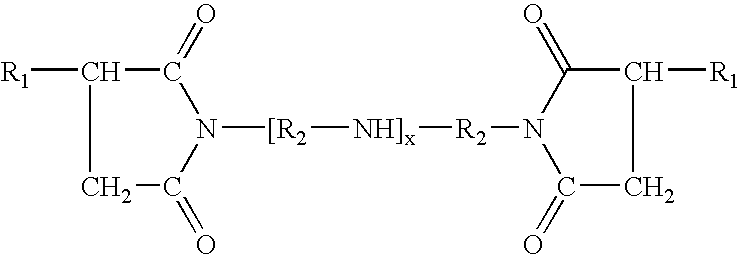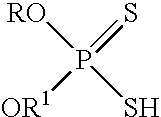Engine lubricant with enhanced thermal stability
- Summary
- Abstract
- Description
- Claims
- Application Information
AI Technical Summary
Benefits of technology
Problems solved by technology
Method used
Image
Examples
examples
[0100]The following examples are provided to illustrate the present invention without limiting it. While the present invention has been described with reference to specific embodiments, this application is intended to encompass various changes and substitutions that may be made by those skilled in the art.
[0101]Oil A and Comparative Oil B were prepared and tested for thermal stability in three art-accepted bench tests. The first bench test was the CEC-L-85-T-99 PDSC Thermal Stability Test, which measured the oxidation tendencies of Oil A and Comparative Oil B. In that test, a small amount of Oil A or Comparative Oil B was weighed into a sample pan and placed in a test cell. The cell was then heated to a specified temperature and pressurized with air. The cell was held at that temperature and pressure until an exothermic reaction occurred. The extrapolated onset time was reported as the oxidation induction time. The pass / fail minimum limit for this test is 35 minutes.
[0102]The second...
PUM
| Property | Measurement | Unit |
|---|---|---|
| Temperature | aaaaa | aaaaa |
| Time | aaaaa | aaaaa |
| Mass | aaaaa | aaaaa |
Abstract
Description
Claims
Application Information
 Login to View More
Login to View More - R&D
- Intellectual Property
- Life Sciences
- Materials
- Tech Scout
- Unparalleled Data Quality
- Higher Quality Content
- 60% Fewer Hallucinations
Browse by: Latest US Patents, China's latest patents, Technical Efficacy Thesaurus, Application Domain, Technology Topic, Popular Technical Reports.
© 2025 PatSnap. All rights reserved.Legal|Privacy policy|Modern Slavery Act Transparency Statement|Sitemap|About US| Contact US: help@patsnap.com


